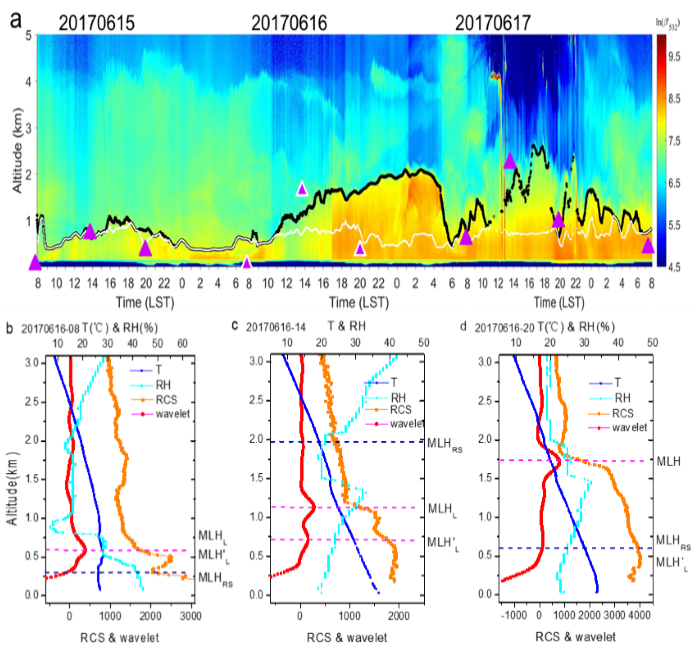Study Reveals Long-term Characteristics of Atmospheric Mixing Layer Height over Beijing
A research team led by Prof. LI Zhengqiang from the National Engineering Laboratory of Remote Sensing Satellite Application under the Aerospace Information Research Institute, Chinese Academy of Sciences, has made progress in pinpointing the characteristics of the atmospheric mixing layer height (MLH) over Beijing by laser radar (lidar). The paper titled "Determination and climatology of diurnal cycle of atmospheric mixing layer height over Beijing 2013-2018: Lidar measurements and implication for air pollution” was published online on July 27 in the journal of Atmospheric Chemistry and Physics.
The atmospheric MLH determines the space in which pollutants diffuse and is conducive to the estimation of the pollutant concentration near the surface. In existing studies, numerical simulations, ground remote sensing or meteorological radiosondes are used to obtain the short-term characteristics of the MLH in Beijing during heavy pollution events, while continuous long-term observations of the MLH are relatively lack, despite their advantages in improving the simulation accuracy of meteorological models and optimizing the simulation results for pollutants.
In this study, the research team made use of lidar to observe the daily variation of the atmospheric MLH and obtained the climatological characteristics of the diurnal cycle of the MLH.
Compared with the radiosondes results, the lidar results show good performance in calculating the height of the convective boundary layer during the daytime and the height of the residual layer at nighttime, and also reveal the potential of obtaining the height of the stable boundary layer at night.
The study also shows the seasonal characteristics of the maximum diurnal variation of MLH in Beijing, indicating that it is lower in winter and autumn and higher in spring and summer. From 2014 to 2018, the annual average value of the daily maximum value of the mixing layer height increased year by year, with a total increase of 0.338 km, of which 2016 had the largest increase. The increment in the height of the mixing layer is “partly due to the improvement of air quality in Beijing”, the paper analyses.
The lidar observation-based dataset of the long-term diurnal change of MLH over Beijing urban area could provide valuable data reference for studying the near-surface air pollution of the region by using atmospheric model, concludes the paper.
The research is supported by the National Natural Science Foundation of China (No. 41671367, 41925019).

A comparison between the radiosondes results and lidar results of MLH in Beijing.



News & Events